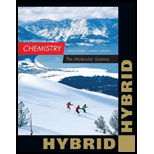
Concept explainers
(a)
Interpretation:
The
(a)
Explanation of Solution
The equilibrium reaction is given below.
The acid ionization constant can be written as given below.
A table can be set up as shown below.
The concentration of
At equilibrium,
Then,
The
Therefore, the
(b)
Interpretation:
The
(b)
Explanation of Solution
The equilibrium reaction is given below.
The acid ionization constant can be written as given below.
A table can be set up as shown below.
The concentration of
At equilibrium,
Assuming x is very small, it can be written
Then,
The
Therefore, the
(c)
Interpretation:
The
(c)
Explanation of Solution
The equilibrium reaction is given below.
The base ionization constant can be written as given below.
A table can be set up as shown below.
The concentration of
At equilibrium,
Assuming x is very small, it can be written
Then,
The
Therefore, the
(d)
Interpretation:
The
(d)
Explanation of Solution
The concentration of
The equilibrium reaction is given below.
The base ionization constant can be written as given below.
A table can be set up as shown below.
The concentration of
At equilibrium,
Assuming x is very small, it can be written
Then,
The
Therefore, the
(e)
Interpretation:
The
(e)
Explanation of Solution
The reaction of
The concentration of
The
Therefore, the
(f)
Interpretation:
The
(f)
Explanation of Solution
A table can be set up as shown below.
The concentration of
At equilibrium,
Then,
The
Therefore, the
(g)
Interpretation:
The
(g)
Explanation of Solution
A table can be set up as shown below.
The concentration of
At equilibrium,
Then,
Assuming x is very small, it can be written
The
Therefore, the
(h)
Interpretation:
The
(h)
Explanation of Solution
Neither of these ions affect the
Want to see more full solutions like this?
Chapter 14 Solutions
Chemistry: The Molecular Science, Hybrid Edition (with OWLv2 24-Months Printed Access Card)
- Consider 0.10 M solutions of the following compound: AlCl3, NaCN, KOH, CsClO4, and NaF. Place these solutions in order of increasing pH.arrow_forwardWhat is the pH of a solution obtained by mixing 235 mL of NaOH with a pH of 11.57 and 316 mL of Sr(OH)2 with a pH of 12.09? Assume that volumes are additive.arrow_forwardCalculate [OH-] and pH in a solution in which the hydrogen sulfite ion, HSO3-, is 0.429 M and the sulfite ion is (a) 0.0249 M (b) 0.247 M (c) 0.504 M (d) 0.811 M (e) 1.223 Marrow_forward
- The pH of a solution of Ba(OH)2 is 10.66 at 25 . What is the hydroxide ion concentration in the solution? If the solution volume is 125 mL, what mass of Ba(OH)2 must have been dissolved?arrow_forwardA solution of acetic acid, HC2H3O2, on a laboratory shelf was of undetermined concentration. If the pH of the solution was found to be 2.57, what was the concentration of the acetic acid? The Ka of acetic acid is 1.7 105.arrow_forwardCalculate the pH of a solution prepared by mixing 49.0 mL of butyric acid, HC4H7O2, with 6.15 g of KOH in water. The following data about butyric acid may be helpful: density=0.9595g/mL;K a =1.54105arrow_forward
- Tile pH of a solution of household ammonia, a 0.950 M solution of NH3 is 11.612. Determine Kb for NH3 from these data.arrow_forwardCalculate the pH of each of the following solutions. (a) 10.0 mL of 0.300 M hydrofluoric acid plus 30.0 mL of 0.100 M sodium hydroxide (b) 100.0 mL of 0.250 M ammonia plus 50.0 mL of 0.100 M hydrochloric acid (c) 25.0 mL of 0.200 M sulfuric acid plus 50.0 mL of 0.400 M sodium hydroxidearrow_forward
 Introductory Chemistry: A FoundationChemistryISBN:9781285199030Author:Steven S. Zumdahl, Donald J. DeCostePublisher:Cengage Learning
Introductory Chemistry: A FoundationChemistryISBN:9781285199030Author:Steven S. Zumdahl, Donald J. DeCostePublisher:Cengage Learning Chemistry by OpenStax (2015-05-04)ChemistryISBN:9781938168390Author:Klaus Theopold, Richard H Langley, Paul Flowers, William R. Robinson, Mark BlaserPublisher:OpenStax
Chemistry by OpenStax (2015-05-04)ChemistryISBN:9781938168390Author:Klaus Theopold, Richard H Langley, Paul Flowers, William R. Robinson, Mark BlaserPublisher:OpenStax Chemistry & Chemical ReactivityChemistryISBN:9781337399074Author:John C. Kotz, Paul M. Treichel, John Townsend, David TreichelPublisher:Cengage Learning
Chemistry & Chemical ReactivityChemistryISBN:9781337399074Author:John C. Kotz, Paul M. Treichel, John Townsend, David TreichelPublisher:Cengage Learning Chemistry & Chemical ReactivityChemistryISBN:9781133949640Author:John C. Kotz, Paul M. Treichel, John Townsend, David TreichelPublisher:Cengage Learning
Chemistry & Chemical ReactivityChemistryISBN:9781133949640Author:John C. Kotz, Paul M. Treichel, John Townsend, David TreichelPublisher:Cengage Learning Chemistry: The Molecular ScienceChemistryISBN:9781285199047Author:John W. Moore, Conrad L. StanitskiPublisher:Cengage Learning
Chemistry: The Molecular ScienceChemistryISBN:9781285199047Author:John W. Moore, Conrad L. StanitskiPublisher:Cengage Learning Chemistry: Principles and PracticeChemistryISBN:9780534420123Author:Daniel L. Reger, Scott R. Goode, David W. Ball, Edward MercerPublisher:Cengage Learning
Chemistry: Principles and PracticeChemistryISBN:9780534420123Author:Daniel L. Reger, Scott R. Goode, David W. Ball, Edward MercerPublisher:Cengage Learning





